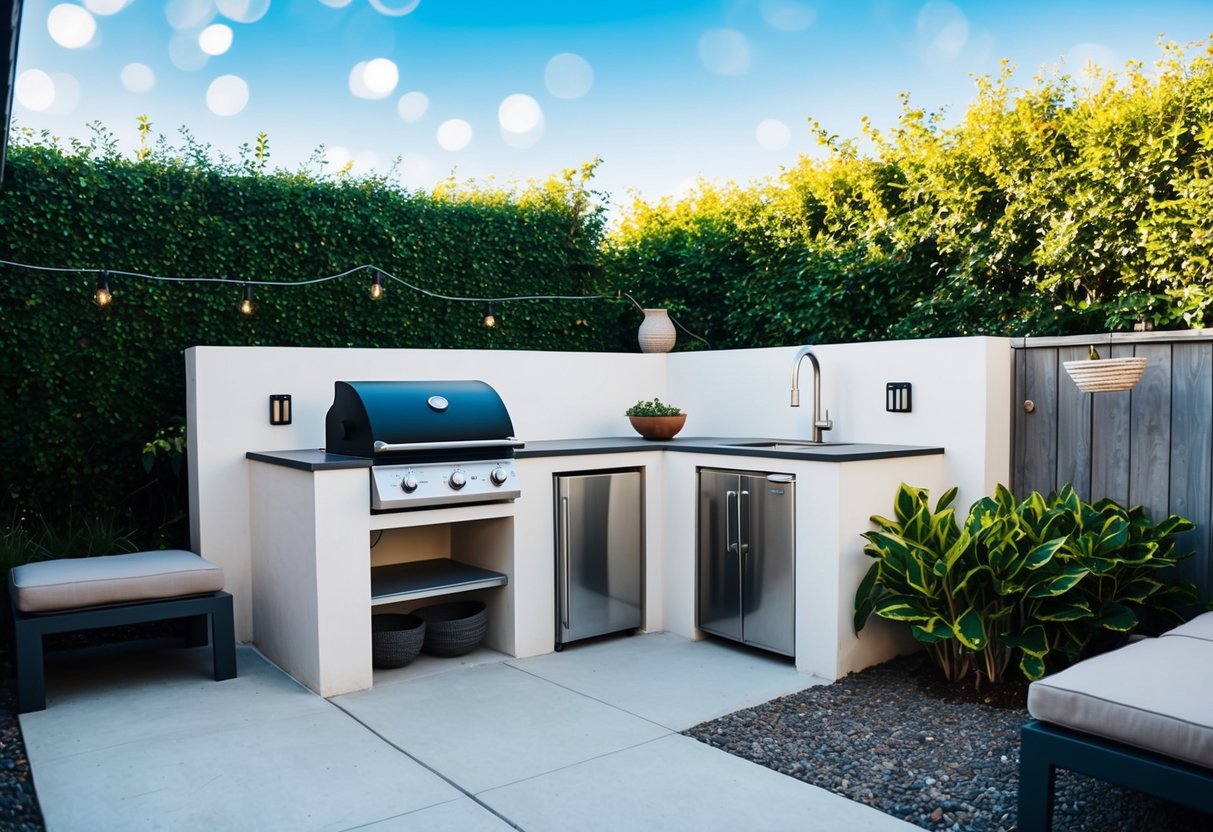
Utility Connections and Safety
When building a low-cost outdoor kitchen, establishing safe connections for utilities is essential. Electricity, plumbing, gas lines, and ventilation all play critical roles in the functionality and safety of the space. Proper planning and installation ensure a seamless and enjoyable cooking experience outside.
Electrical and Plumbing
Installing electrical connections requires careful consideration to withstand outdoor conditions. GFCI outlets should be used to prevent electrical faults due to moisture. Waterproof covers and conduits add layers of protection, while ensuring that wiring is correctly insulated and grounded. Lighting, essential for nighttime cooking, needs to be safely wired to avoid hazards.
For plumbing, durable materials resistant to weather changes are vital. Connecting water lines to the main supply involves checking for leaks and ensuring the pipes are well-protected against freezing temperatures. Drainage should be planned to prevent water accumulation, which can lead to structural issues or attract pests. Proper plumbing installation will enhance not only convenience but also safety in the outdoor kitchen.
Gas Lines and Ventilation
Gas lines for outdoor kitchens must meet specific safety codes. Different materials like copper or stainless steel may be used, and professional installation is recommended to ensure safety. Regularly check for leaks, using soapy water to detect any escaping gas before lighting appliances. Safety shut-off valves provide an additional layer of protection if a problem arises.
Ventilation is crucial for gas appliances to function safely. Proper airflow prevents the build-up of harmful gases such as carbon monoxide. Ensure outdoor kitchens have open spaces or mechanical ventilation solutions. This helps maintain air quality and contributes to the longevity and efficiency of cooking appliances, making outdoor cooking safer and more enjoyable.
Preparation and Storage Areas
Establishing efficient preparation and storage areas in your outdoor kitchen enhances functionality and convenience. By optimizing counter space and incorporating functional cabinetry and shelving, you can create an efficient workspace for cooking and entertaining outdoors.
Counter Space for Food Preparation
Counter space is essential in an outdoor kitchen, providing a dedicated area for chopping, mixing, and assembling ingredients. When planning counter space, it’s important to consider the materials used. Weather-resistant surfaces like granite, stainless steel, or concrete are ideal, as they withstand the elements and are easy to clean.
It’s beneficial to have enough counter area to accommodate portable appliances or extra cooking gadgets, too. Balancing between spaciousness and accessibility ensures an efficient preparation zone. Additionally, positioning counters near cooking stations minimizes the need to move ingredients over long distances, reducing prep time.
Ample workspace is crucial for preparing meals effectively, allowing for seamless transitions from slicing to serving. Thoughtful design in counter placement enhances the overall cooking flow, making outdoor culinary activities more enjoyable.
Outdoor Cabinetry and Shelving
Outdoor cabinetry and shelving offer vital storage solutions for a low-cost kitchen. Choosing durable materials such as teak, powder-coated metal, or marine-grade polymer ensures longevity and resistance to weather conditions. These materials also require minimal maintenance, allowing for easy upkeep.
Cabinetry helps keep utensils, spices, and cookware organized, reducing clutter. Including adjustable shelves enhances flexibility, accommodating different-sized items efficiently. Consider integrating cabinetry under countertops to maximize space without obstructing movement.
For open shelving, stability and accessibility are key. Shelving should be strong enough to withstand weight and adverse conditions while being easy to reach. These storage elements collectively contribute to a tidy and functional outdoor cooking environment, offering convenience and ease for all culinary endeavors.